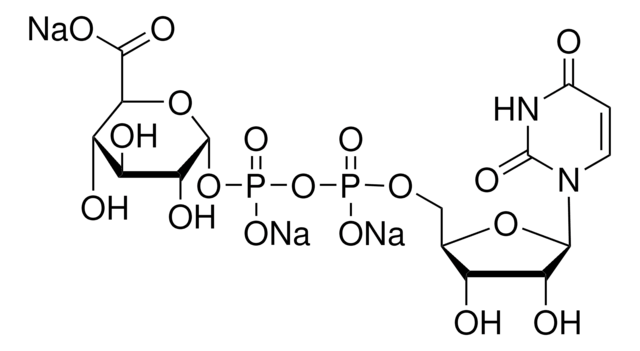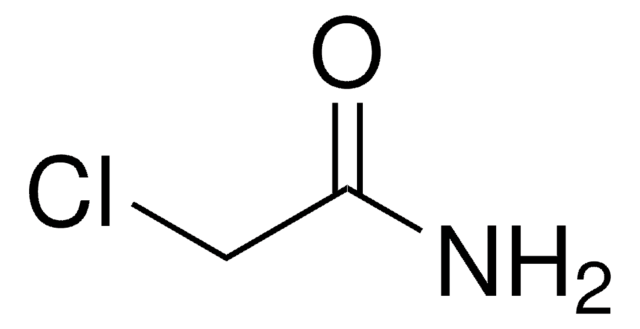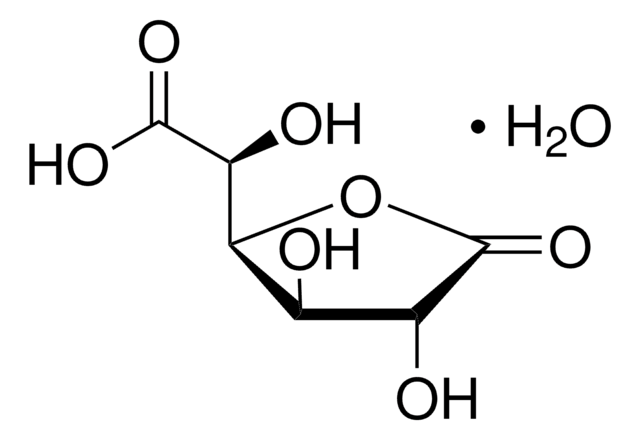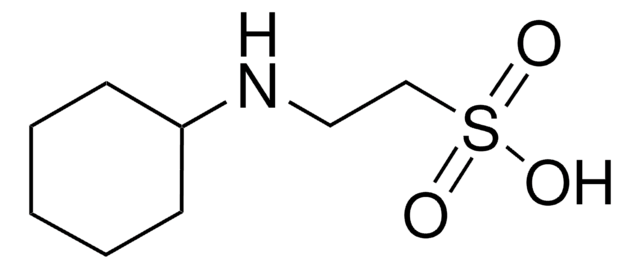E9502
EPPS
≥99.5% (titration)
Sinônimo(s):
4-(2-Hydroxyethyl)-1-piperazinepropanesulfonic acid, 4-(2-Hydroxyethyl)piperazine-1-propanesulfonic acid, N-(2-Hydroxyethyl)piperazine-N′-(3-propanesulfonic acid), HEPPS
About This Item
Produtos recomendados
Nível de qualidade
Ensaio
≥99.5% (titration)
forma
powder
pH
7.3-8.7
faixa de pH útil
7.3-8.7
pKa (25 °C)
8.0
pKa
8
pf
237-239 °C (lit.)
solubilidade
H2O: 25 g + 50 mL, clear, colorless
λmax
A290 at ≤0.1 (C=33% w/w)
aplicação(ões)
diagnostic assay manufacturing
cadeia de caracteres SMILES
OCCN1CCN(CCCS(O)(=O)=O)CC1
InChI
1S/C9H20N2O4S/c12-8-7-11-5-3-10(4-6-11)2-1-9-16(13,14)15/h12H,1-9H2,(H,13,14,15)
chave InChI
OWXMKDGYPWMGEB-UHFFFAOYSA-N
Procurando produtos similares? Visita Guia de comparação de produtos
Categorias relacionadas
Aplicação
- to verify the effect of pH variation on the proteolytic activity of the posterior midgut (PMG) contents and anterior midgut (AMG) tissue homogenate
- to prepare a destaining buffer to destain intensely stained gel pieces
- to prepare digestion buffer for in-gel enzymatic digestion
- to reconstitute the digested peptides for the processing of brain-derived extracellular vesicle (EV) proteins and 16-plex isobaric tandem mass tag (TMT) peptide labeling
Código de classe de armazenamento
11 - Combustible Solids
Classe de risco de água (WGK)
WGK 3
Ponto de fulgor (°F)
Not applicable
Ponto de fulgor (°C)
Not applicable
Equipamento de proteção individual
Eyeshields, Gloves, type N95 (US)
Certificados de análise (COA)
Busque Certificados de análise (COA) digitando o Número do Lote do produto. Os números de lote e remessa podem ser encontrados no rótulo de um produto após a palavra “Lot” ou “Batch”.
Já possui este produto?
Encontre a documentação dos produtos que você adquiriu recentemente na biblioteca de documentos.
Os clientes também visualizaram
Nossa equipe de cientistas tem experiência em todas as áreas de pesquisa, incluindo Life Sciences, ciência de materiais, síntese química, cromatografia, química analítica e muitas outras.
Entre em contato com a assistência técnica









